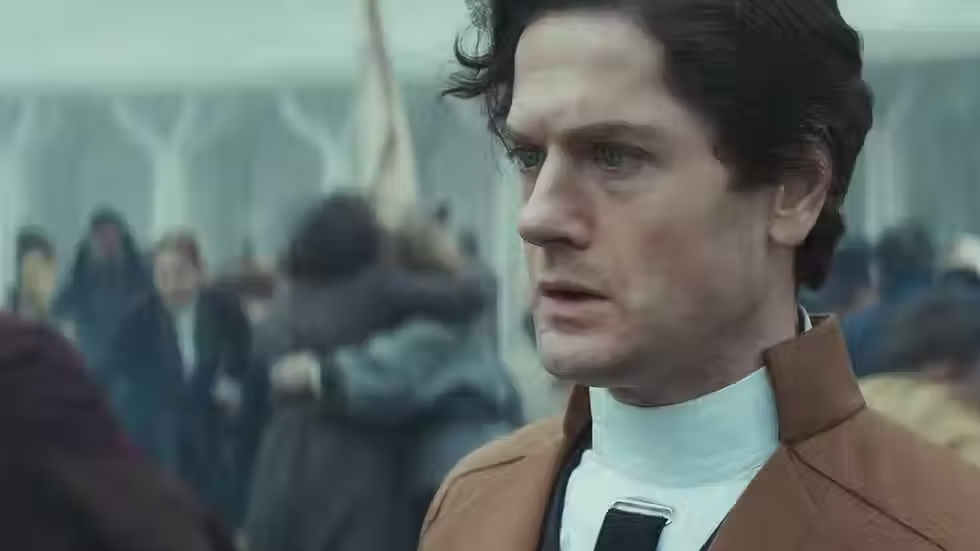The Force Awakens: Shadows of the Empire
- ogradyfilm
- Dec 3, 2018
- 3 min read
The oppressive sun beats down on the shifting sand dunes and salt-caked valleys of planet Jakku. Our heroine, Rey, her face obscured by rags and heavy goggles, creeps through the debris-strewn corridors of a fallen starship, stripping whatever equipment she can trade for food rations. At first glance, she’s little more than another anonymous scavenger, one among hundreds of desperate souls surviving off the metal bones that litter a barren world. Later, as she finishes a modest meal in the shade of her home—the hollowed out carcass of an AT-AT walker, appropriately enough—she gazes longingly at the horizon, at the freighters and cargo ships that enter and leave the atmosphere so freely, and she dreams.
Unlike Luke Skywalker, however, Rey dreams not of engineering an escape from her day-to-day routine, but of rescue, clinging to the false hope that, if she can only wait patiently enough, the family that abandoned her will one day return; she even rejects a generous job offer (from her childhood hero, no less) that would greatly improve her standard of living, fearing an extended absence would rob her of a happy reunion. In other words, she refuses the call to adventure because she refuses to let go of her traumatic past.

Although the majority of fans have embraced the latest chapter in the Star Wars saga, even its most ardent supporters acknowledge that The Force Awakens cannibalizes much of its overarching plot structure from A New Hope (which itself drew heavy inspiration from Joseph Campbell’s theories on the monomyth). While I cannot deny the parallels between the two films (a lowly droid carrying vital information guides the inhabitant of a desert planet to a greater destiny), I do not view them as an inherent weakness. After all, a story’s “shape" tends to arise from its central thematic concerns, and Episode VII concerns itself almost entirely with the burden of legacy and the need to escape the past in order to forge a better future.
Consider the very first sentence of the iconic opening text crawl, the seed from which the conflict grows: “Luke Skywalker has vanished.” As the narrative unfolds, the audience learns that Luke’s efforts to rebuild the Jedi Order were thwarted by an ambitious, headstrong student; like his mentors before him, the betrayed Jedi Master fled into self-imposed exile, too ashamed to face his utter failure. And in his absence, evil thrived; the tyrannical First Order “rose from the ashes” of the old Empire, led by such zealots as General Hux, who firmly believes his fanatical cult can bring an end to the “chaos” that has flourished under the rule of the complacent, ineffectual New Republic. Like Rey, Hux (and, indeed, his entire fascist organization) lives in the shadows of an age long past, spouting the same old Imperial rhetoric without comprehending its full implications—a mere puppet in the hands of far more sinister forces.

Nearly every major character arc in the film echoes this broader conflict. Finn’s motivation revolves entirely around his desire to simply run away; he was raised on First Order propaganda, has intimate knowledge of his former masters’ ruthlessness and brutality, and therefore believes that any opposition is futile. Like Luke, he is terrified of his past, and makes every effort to disappear—even at the expense of a happy future. Likewise, Rey struggles against her burgeoning connection with The Force, literally retreating from Maz Kanata’s earnest attempts to relinquish Skywalker’s ancestral lightsaber into her care; she prefers her delusions to the painful memories evoked by her awakening.
Even the primary antagonist, Kylo Ren, longs to escape his past, severing all ties with his family in order to give himself over completely to The Dark Side. He idolizes Darth Vader, and feels that, by restoring “peace” to the galaxy under The First Order’s iron rule, he will honor the former Sith Lord’s legacy and redeem his shameful “fall” to the Light Side. And yet, in his most private moments, the young knight admits that he still feels “the pull of The Light,” and fears that he, too, will be seduced—or, worse, torn to shreds by the conflict raging within him.

Thus, all three major characters must overcome their fears in order to move forward. Finn learns to value the needs of others above simple self-preservation, and finds new purpose as a member of The Resistance. After testing the limits of her newfound powers in a life-or-death struggle, Rey finally accepts ownership of Luke’s long-lost lightsaber, taking her first step into a larger world. And, on a bleaker note, Kylo Ren reaffirms his dedication to his chosen path with a dramatic show of force that eradicates one of his last remaining tethers to humanity. The inextricably intertwined journeys of these heroes and villains open up a universe of possibilities, and I look forward to seeing how future installments of the franchise continue to distinguish themselves within this familiar narrative framework.
[Originally written December 22, 2015.]





Comments